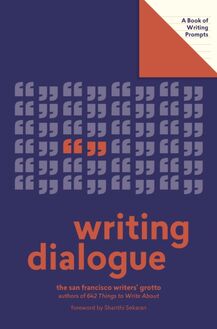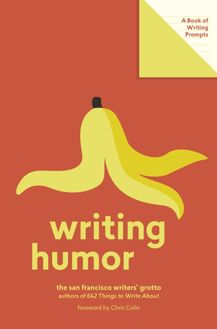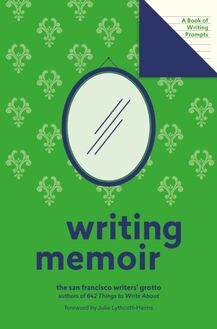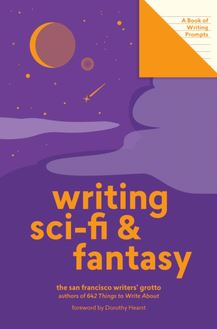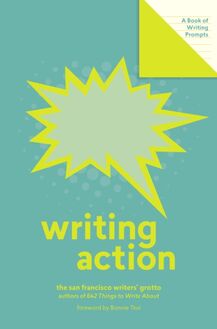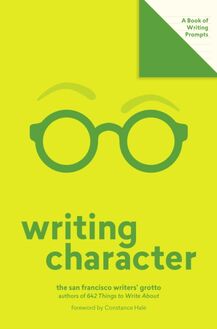-
 Univers
Univers
-
 Ebooks
Ebooks
-
 Livres audio
Livres audio
-
 Presse
Presse
-
 Podcasts
Podcasts
-
 BD
BD
-
 Documents
Documents
-
- Cours
- Révisions
- Ressources pédagogiques
- Sciences de l’éducation
- Manuels scolaires
- Langues
- Travaux de classe
- Annales de BEP
- Etudes supérieures
- Maternelle et primaire
- Fiches de lecture
- Orientation scolaire
- Méthodologie
- Corrigés de devoir
- Annales d’examens et concours
- Annales du bac
- Annales du brevet
- Rapports de stage
La lecture à portée de main
Vous pourrez modifier la taille du texte de cet ouvrage
Découvre YouScribe en t'inscrivant gratuitement
Je m'inscrisWriting Sci-Fi and Fantasy (Lit Starts) , livre ebook
Découvre YouScribe en t'inscrivant gratuitement
Je m'inscrisEn savoir plus
Vous pourrez modifier la taille du texte de cet ouvrage
En savoir plus

Description
Informations
| Publié par | ABRAMS BOOKS |
| Date de parution | 05 juillet 2022 |
| Nombre de lectures | 0 |
| EAN13 | 9781647009748 |
| Langue | English |
Informations légales : prix de location à la page 0,0584€. Cette information est donnée uniquement à titre indicatif conformément à la législation en vigueur.
Extrait
writing sci-fi and fantasy
Overhead, without any fuss, the stars were going out. I was about ten years old when I read that final line of Arthur C. Clarke s short story The Nine Billion Names of God. It s about two engineers who go to a Tibetan lamasery to install a computer to help the lamas discover the names of God. The scientists are gently contemptuous of the lamas until they realize, a few moments too late (in fantasy and science fiction it is always a few moments too late), that once the mystery of God is solved, humankind will have fulfilled its purpose and all of existence will end. That s when the stars start snuffing out. In little more than twenty-five hundred words, Clarke had rocked my world.
You can do that?- I thought, little bubbles popping inside my brain- you re allowed to take what s real and move it a little and make it something different? Yes, I would learn. You can.
Not long after, I read Madeleine L Engle s A Wrinkle in Time , in which Mrs Whatsit explains to Meg Murry that traveling at the speed of light is the long way around. For the following, imagine that Mrs Who has a long skirt stretched out between two hands:
You see, Mrs Whatsit said, if a very small insect were to move from the section of the skirt in Mrs Who s right hand to that in her left, it would be quite a long walk for him if he had to walk straight across.
Swiftly Mrs Who brought her hands, still holding the skirt, back together.
Now, you see, Mrs Whatsit said, he would be there, without that long trip. That is how we travel.
Mrs Whatsit then dispels the myth of three-dimensional space and introduces the concept of a tesseract, the fifth dimension that allows her to take Meg on adventures through the cosmos.
You can do that? You can start with reality, ask a question about it, and answer with something that might be true? Yes, I would learn. You can.
Take what is known, mix it with the imagination of what could be, then add a healthy dose of science, and you have science fiction. Add instead a generous dollop of magic or myth, meddling gods, strange beasts, or a sociological twist, and you have fantasy. Or put some or all of them together and you have a work that is part of the smorgasbord that is speculative fiction, which covers everything from hard science fiction, to swords-and-sorcery fantasy, to magic realism, to alternate history, to horror, to dystopian fiction, and beyond.
But being unbound by the laws of nature and unbound by the laws of storytelling are two different things. Writing science fiction and fantasy (SFF) requires the same discipline, focus, research, and careful storytelling as writing any fiction-with the added complexity of striking a balance between walking in wonder and staying down to earth.
We ll go in-depth into three examples of how this is done from different areas of SFF: one fantasy (N. K. Jemisin s The Fifth Season ), one hard science fiction with space travel (Ann Leckie s Ancillary Justice ), and one sociological exploration of a potential future (Octavia Butler s Parable of the Sower ). But the range of SFF is as broad as your imagination. From the possible dystopian future of Margaret Atwood s The Handmaid s Tale , to the magic-in-our-world exploration of Nnedi Okorafor s Akata Witch , to the time-travel comedy of manners of Connie Willis s To Say Nothing of the Dog , to the multilingual spacefaring dolphins of David Brin s Uplift series, the opportunities of SFF are as expansive as the universe itself.
Here are the steps to beginning an SFF story:
Find your concept, or theme, by asking what if? or a similar question.
Build a world around the question you have asked.
Create characters who inhabit the world you re building and face the consequence of the what-if you ve asked.
Stitch the story together, using impeccable logic and detail.
Most SFF writers begin with a concept, or theme. This is the big idea, question, shift in perspective, or twist that your story hangs upon. It s what invites your reader into an alternate reality that is somehow different from the everyday or the usual.
It most often is framed as a question, like:
What would happen if a Jesuit mission went to a distant planet and found not one but two sentient species? (Mary Doria Russell s The Sparrow )
What if two cities existed in the same space, and each pretended the other didn t exist until a murder forced them to do so? (China Mi ville s The City the City )
What if there were a world where telepathic dragons were our only hope of fighting a dangerous threat coming from the sky? (Anne McCaffrey s Dragonriders series)
What if a group of people had the power to control seismic activity of a restless earth and were oppressed and hunted because of this skill? (N. K. Jemisin s Broken Earth series)
-
 Univers
Univers
-
 Ebooks
Ebooks
-
 Livres audio
Livres audio
-
 Presse
Presse
-
 Podcasts
Podcasts
-
 BD
BD
-
 Documents
Documents
-
Jeunesse
-
Littérature
-
Ressources professionnelles
-
Santé et bien-être
-
Savoirs
-
Education
-
Loisirs et hobbies
-
Art, musique et cinéma
-
Actualité et débat de société
-
Jeunesse
-
Littérature
-
Ressources professionnelles
-
Santé et bien-être
-
Savoirs
-
Education
-
Loisirs et hobbies
-
Art, musique et cinéma
-
Actualité et débat de société
-
Actualités
-
Lifestyle
-
Presse jeunesse
-
Presse professionnelle
-
Pratique
-
Presse sportive
-
Presse internationale
-
Culture & Médias
-
Action et Aventures
-
Science-fiction et Fantasy
-
Société
-
Jeunesse
-
Littérature
-
Ressources professionnelles
-
Santé et bien-être
-
Savoirs
-
Education
-
Loisirs et hobbies
-
Art, musique et cinéma
-
Actualité et débat de société
- Cours
- Révisions
- Ressources pédagogiques
- Sciences de l’éducation
- Manuels scolaires
- Langues
- Travaux de classe
- Annales de BEP
- Etudes supérieures
- Maternelle et primaire
- Fiches de lecture
- Orientation scolaire
- Méthodologie
- Corrigés de devoir
- Annales d’examens et concours
- Annales du bac
- Annales du brevet
- Rapports de stage
